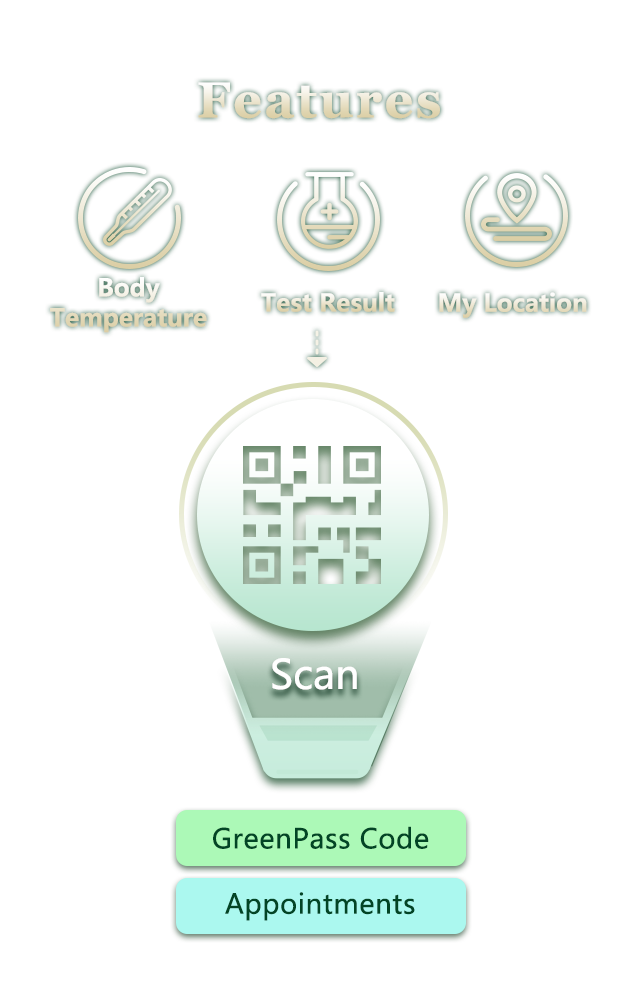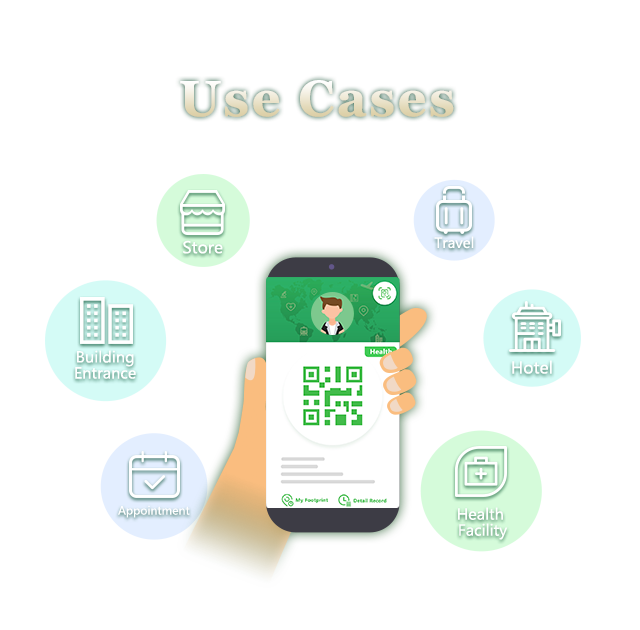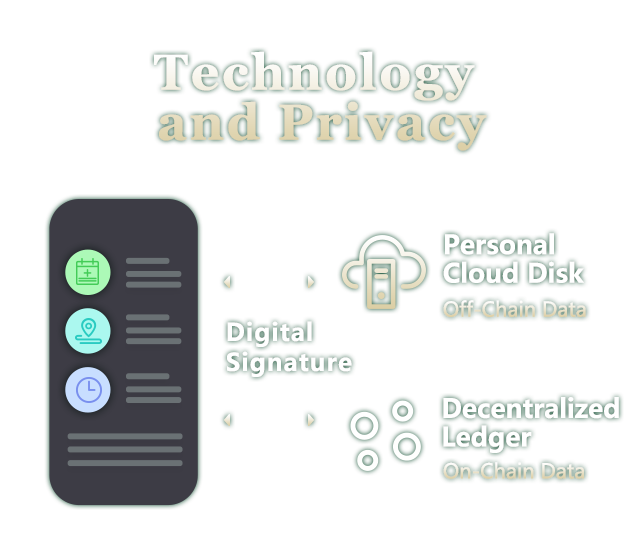


GreenPass 1.0 is simple. At the core is a GreenPass QR Code. This represents your health status based on the information submitted by yourself.
The code has three statuses: Green, Yellow, and Red.
Each status can be tailored for different scenarios, which can help you maintain your own health status and create a level of safety for those around you. The GreenPass code can be scanned by anyone that needs to know your health status, allowing them to grant you access to a particular area.
A convenient appointment service feature helps maintain social interaction among healthy people. This is achieved by scanning the code to log the appointment made with you or your organisation via GreenPass’ appointment service.

GreenPass is perfectly suited to the above scenarios, but is not limited to these. People can simply show their GreenPass code to gain access to stores, buildings, appointments, and other restricted areas.
GreenPass codes can also be used to confirm your health status as a reference during your travel and stay. When the pandemic is at a global level, GreenPass can be a universal health indicator to assist you and the people in the places you visit.
The health status is based on the information you submit. This includes (but is not limited to) temperature history, immunisation records, and geo-locations of your footprint.

Personal data is a digital property right. This is GreenPass’s first priority to protect such rights and privacy. We use blockchain as the base technology to ensure true data ownership and trust. All data submitted by the user belongs to the user via their personal ID which is stored in a decentralized ledger.
All data is stored on-chain and off-chain. The on-chain data or hash of data stored in the decentralized public ledger is immutable. Off-chain data is encrypted and stored in personal cloud disks (or other places with the users’ digital signature). Due to the blockchain’s immutability, all personal data is tamper-proof, verifiable, traceable, and private. This is absolutely vital when dealing with such important data.
